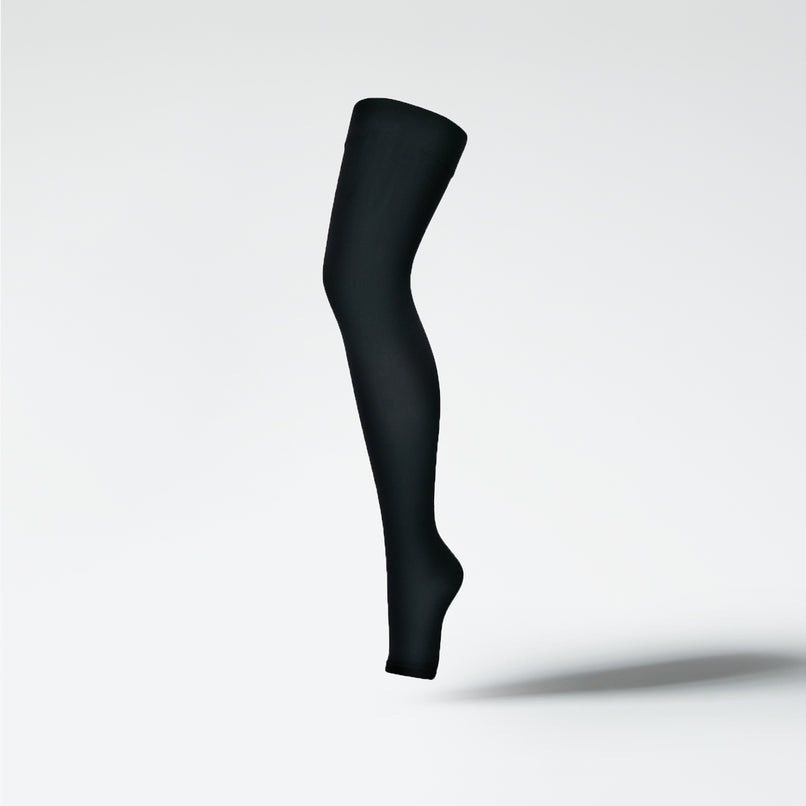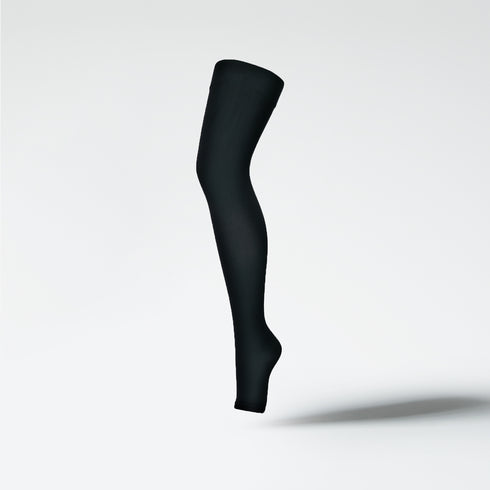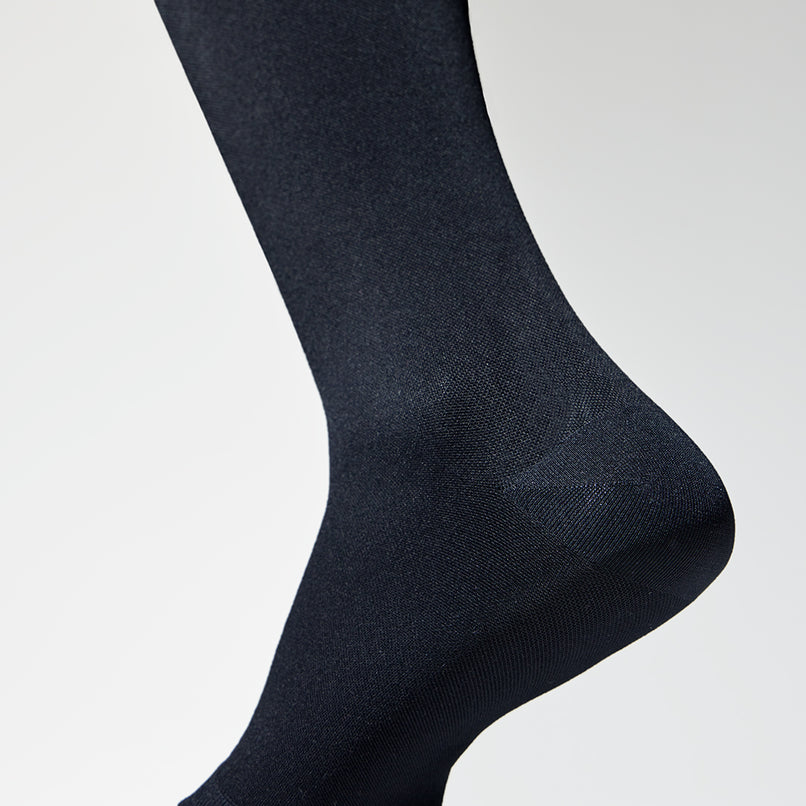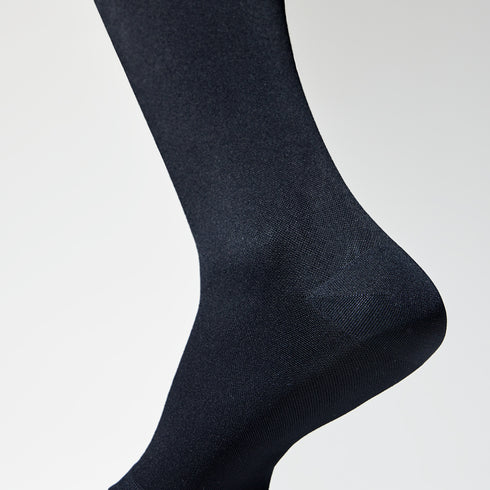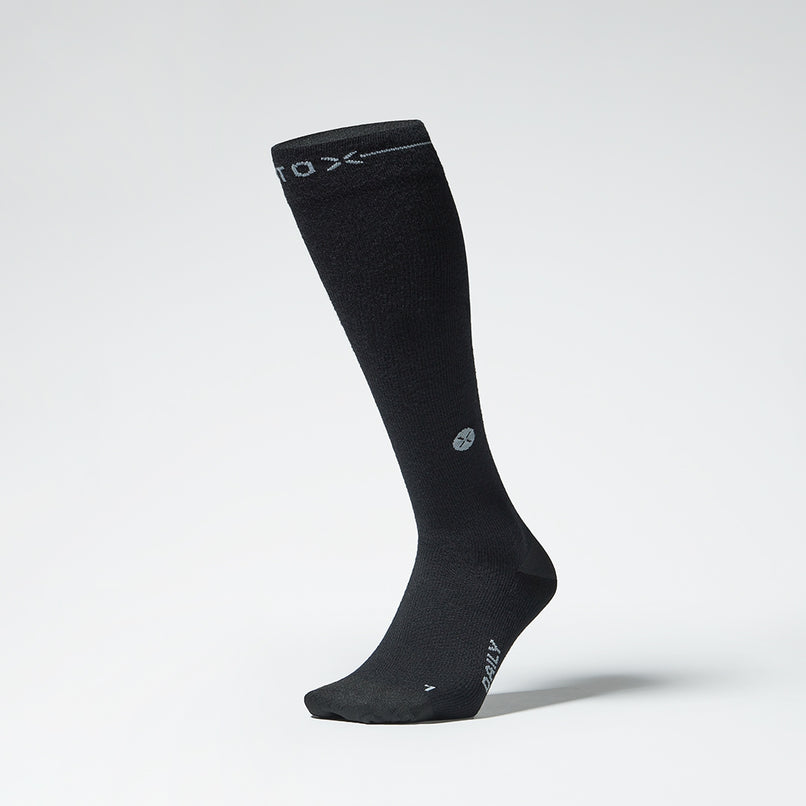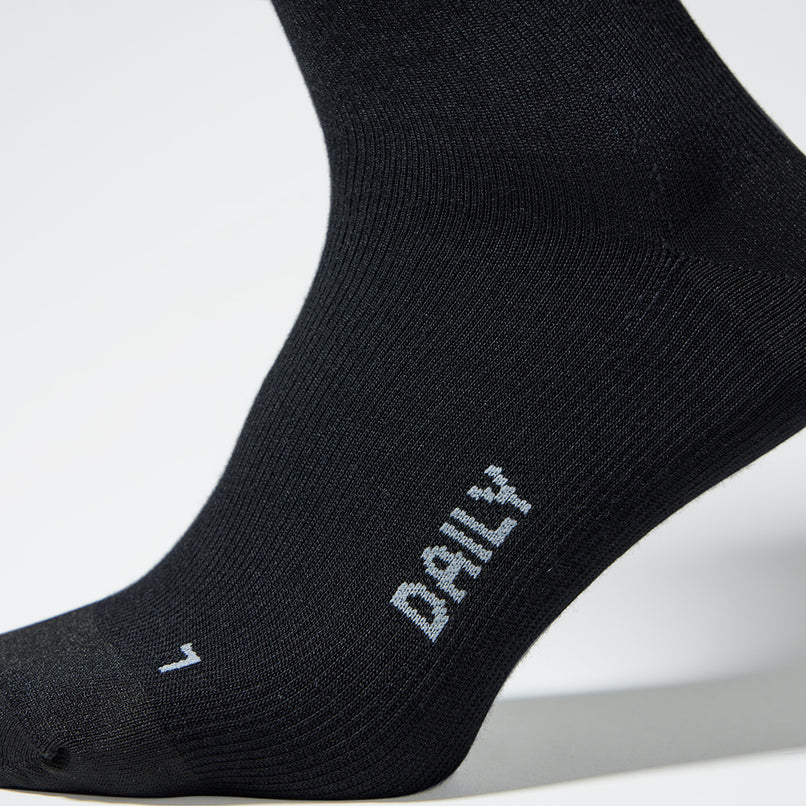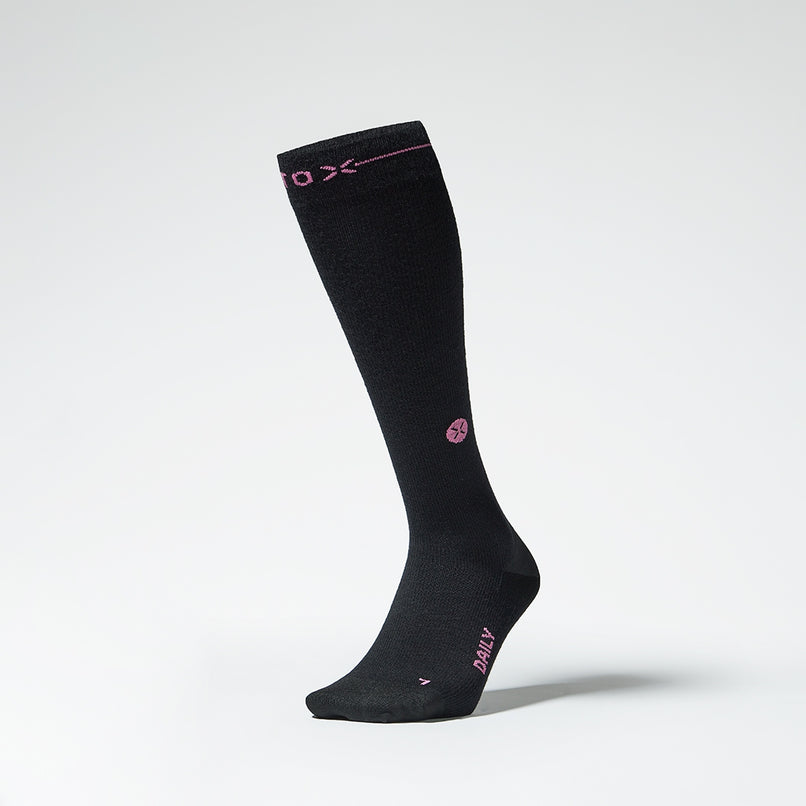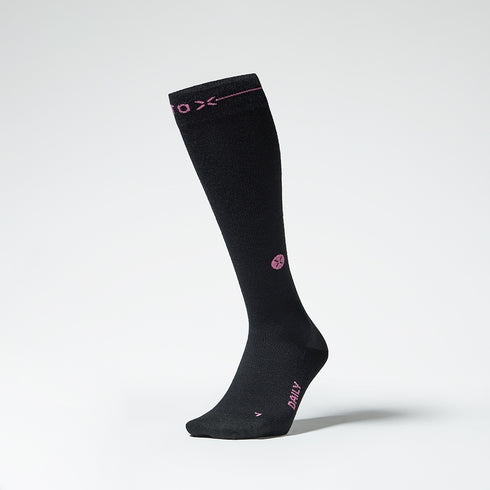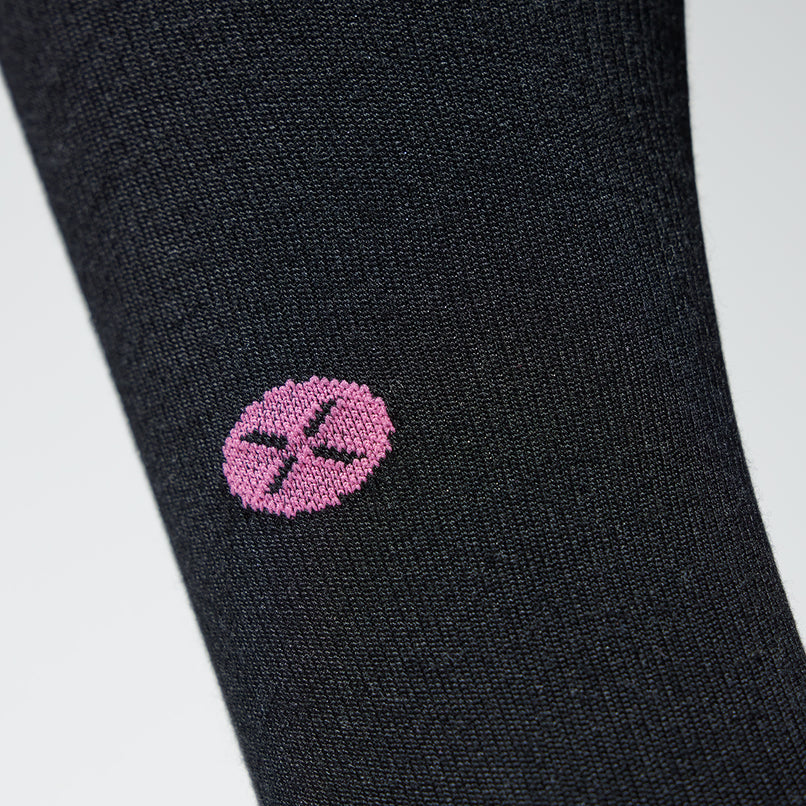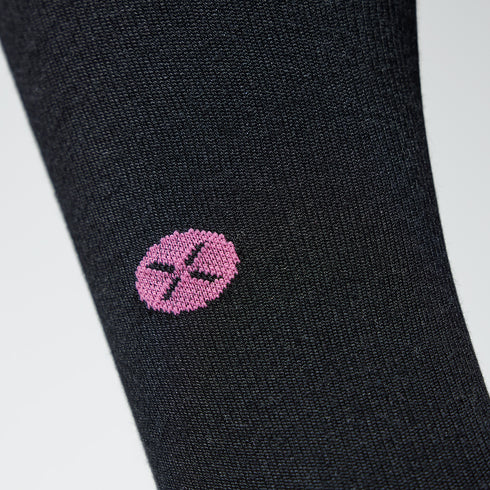Prevent deep vein thrombosis (DVT) with compression stockings

What is Deep Vein Thrombosis (DVT)
Deep vein thrombosis (also called DVT) occurs when blood clots form in veins deep in your body. These clots can appear anywhere in the body. However, this condition often affects the lower leg or thigh.
Symptoms of DVT
Symptoms include swelling, pain or tenderness, and skin that may feel warm to the touch. DVT can happen to anyone. However, you are at higher risk of developing DVT after surgery or trauma. Obesity and smoking are also risk factors.
DVT is a serious condition because a blood clot can travel to the lungs and block an artery. This is called pulmonary embolism. The risk of this condition is higher even after surgery.
Because DVT can lead to serious complications, your doctor may recommend using DVT compression stockings to reduce swelling and improve blood flow to the heart and lungs. If you are not familiar with how these stockings work, you should know the following.
How do compression stockings work against DVT?
Compression stockings are like tights, but they are made of a different material and serve a different purpose. While you can wear normal stockings as fashion or to protect your legs, compression stockings have an elastic fabric that fits snugly around the ankles, legs and thighs. These stockings are tighter around the ankles and less tight around the calves and thighs.
The pressure created by the stockings pushes fluid up the leg, allowing blood to flow freely from the legs to the heart. Compression stockings not only improve blood circulation, they also relieve swelling and pain. They are particularly recommended for the prevention of DVT, as blood pressure prevents blood from accumulating and clotting.
What does medicine say about this?
Compression stockings prevent DVT. Studies of the effectiveness of compression stockings have found an association between compression stockings and the prevention of DVT in hospitalized patients.
One study followed 1,681 people and consisted of 19 trials, including nine involving participants undergoing general surgery and six involving participants undergoing orthopedic surgery. Among those who wore compression stockings before and after surgery, only 9 percent developed DVT, compared to 21 percent of those who did not wear compression stockings.
Another study comparing 15 studies found that wearing compression stockings could reduce the risk of DVT by up to 63 percent in surgical cases.
Compression stockings not only prevent blood clots in patients who have undergone surgery or trauma. Another study concluded that these stockings can also prevent DVT and pulmonary embolism in people on flights longer than four hours.
What is the best way to use compression stockings?
If you have suffered leg trauma or surgery, your doctor may prescribe compression stockings to use while you are in the hospital or at home. You can buy these in a pharmacy, in a medical supply store or from us.
These stockings can also be worn after a DVT diagnosis to reduce some of the discomfort and swelling. Previously, compression stockings were used after acute DVT to prevent a condition called post-thrombotic syndrome (PTS), which can manifest as chronic swelling, pain, skin lesions and ulcers in the lower extremities. However, this is no longer the recommendation.
Compression stockings can also be worn preventively.
For best results, put on compression stockings first thing in the morning before getting up and moving. Moving around can cause swelling. Then it can become more difficult to put on the stockings. Remember that you must remove stockings before showering.
Because compression stockings are elastic and tight, applying lotion to the skin before putting the stocking on can help the material slide down your leg. Make sure the lotion is fully absorbed into your skin before attempting to put the stockings on.
To put on a compression stocking, grasp the top of the stocking, roll toward the heel, place your foot inside the stocking, and then slowly pull the stocking up your leg. Wear the stockings throughout the day and only take them off before bedtime. After each use, wash the stockings with mild soap and air dry. Replace your stockings every four to six months.
Which compression stockings are best for preventing DVT?
Compression stockings are available in different degrees of firmness. It is therefore important to find stockings with the right pressure. Choose between knee-high, high or long stockings. Your doctor may recommend knee-high stockings if you have swelling below the knee, or thigh-high or full length stockings if you have swelling above the knee.
Although your doctor can prescribe a prescription for compression stockings, you don't need a prescription for stockings up to 20mmHg. mmHg is a measure of pressure. Stockings with higher values have a higher degree of compression.
The recommended density for TVT is between 30 and 40 mmHg. Compression options include mild (8 to 15 mmHg), medium (15 to 20 mmHg), firm (20 to 30 mmHg), and extra firm (30 to 40 mmHg).
The right level of tightness is also required to prevent DVT. Compression stocking sizes vary by brand. Therefore, you must first take body measurements and then refer to the brand's size chart to determine the correct size for you.
To find your knee high stocking size, measure the circumference of the narrowest part of your ankle, the widest part of your calf, and your calf length from the floor to the bend of the knee. For thigh-length or full-length stockings, you must also measure the widest part of your thighs and your leg length, starting from the floor to the bottom of your buttocks.
Conclusion
DVT can cause pain and swelling. It can be a potentially life-threatening condition if a blood clot gets into your lungs. Learn how to recognize symptoms of this condition, especially if you've recently traveled long distances, had trauma, or had surgery. Seek treatment if you suspect a blood clot in your leg.
If you are about to have surgery or planning a long journey, ask your doctor about wearing compression stockings to prevent DVT.
Recommended for you

Niek van Spronsen
Niek has been part of the STOX Energy Socks team since 2022, writing informative and inspiring articles about compression socks, sports, health, and nutrition. With a passion for an active and healthy lifestyle, Niek shares valuable tips and advice to help athletes and health-conscious readers improve their performance and well-being.
Latest related articles
Show moreAll products
Discover now
Niek van Spronsen
Niek has been part of the STOX Energy Socks team since 2022, writing informative and inspiring articles about compression socks, sports, health, and nutrition. With a passion for an active and healthy lifestyle, Niek shares valuable tips and advice to help athletes and health-conscious readers improve their performance and well-being.
